β-Hydroxybutyrate protects from alcohol-induced liver injury via a Hcar2-cAMP dependent pathway
- PMID: 29705237
- PMCID: PMC6098974
- DOI: 10.1016/j.jhep.2018.04.004
β-Hydroxybutyrate protects from alcohol-induced liver injury via a Hcar2-cAMP dependent pathway
Abstract
Background & aims: Sterile inflammation resulting in alcoholic hepatitis (AH) occurs unpredictably after many years of excess alcohol intake. The factors responsible for the development of AH are not known but mitochondrial damage with loss of mitochondrial function are common features. Hcar2 is a G-protein coupled receptor which is activated by β-hydroxybutyrate (BHB). We aimed to determine the relevance of the BHB-Hcar2 pathway in alcoholic liver disease.
Methods: We tested if loss of BHB production can result in increased liver inflammation. We further tested if BHB supplementation is protective in AH through interaction with Hcar2, and analyzed the immune and cellular basis for protection.
Results: Humans with AH have reduced hepatic BHB, and inhibition of BHB production in mice aggravated ethanol-induced AH, with higher plasma alanine aminotransferase levels, increased steatosis and greater neutrophil influx. Conversely supplementation of BHB had the opposite effects with reduced alanine aminotransferase levels, reduced steatosis and neutrophil influx. This therapeutic effect of BHB is dependent on the receptor Hcar2. BHB treatment increased liver Il10 transcripts, and promoted the M2 phenotype of intrahepatic macrophages. BHB also increased the transcriptional level of M2 related genes in vitro bone marrow derived macrophages. This skewing towards M2 related genes is dependent on lower mitochondrial membrane potential (Δψ) induced by BHB.
Conclusions: Collectively, our data shows that BHB production during excess alcohol consumption has an anti-inflammatory and hepatoprotective role through an Hcar2 dependent pathway. This introduces the concept of metabolite-based therapy for AH.
Lay summary: Alcoholic hepatitis is a life-threatening condition with no approved therapy that occurs unexpectedly in people who consume excess alcohol. The liver makes many metabolites, and we demonstrate that loss of one such metabolite β-hydroxybutyrate occurs in patients with alcoholic hepatitis. This loss can increase alcohol-induced liver injury, and β-hydroxybutyrate can protect from alcohol-induced liver injury via a receptor on liver macrophages. This opens the possibility of metabolite-based therapy for alcoholic hepatitis.
Keywords: Alcohol-induced liver injury; Hcar2; Therapy; β-Hydroxybutyrate.
Copyright © 2018 European Association for the Study of the Liver. Published by Elsevier B.V. All rights reserved.
Conflict of interest statement
Figures
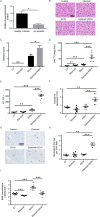
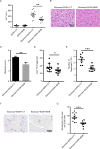
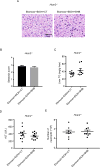

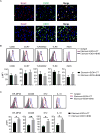
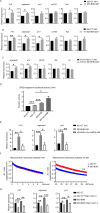

Similar articles
-
Hepatocyte-derived macrophage migration inhibitory factor mediates alcohol-induced liver injury in mice and patients.J Hepatol. 2017 Nov;67(5):1018-1025. doi: 10.1016/j.jhep.2017.06.014. Epub 2017 Jun 22. J Hepatol. 2017. PMID: 28647568 Free PMC article.
-
Ketone body β-hydroxybutyrate ameliorates colitis by promoting M2 macrophage polarization through the STAT6-dependent signaling pathway.BMC Med. 2022 Apr 15;20(1):148. doi: 10.1186/s12916-022-02352-x. BMC Med. 2022. PMID: 35422042 Free PMC article.
-
Lysine β-hydroxybutyrylation promotes lipid accumulation in alcoholic liver disease.Biochem Pharmacol. 2024 Oct;228:115936. doi: 10.1016/j.bcp.2023.115936. Epub 2023 Nov 25. Biochem Pharmacol. 2024. PMID: 38012969
-
A Unifying Hypothesis Linking Hepatic Adaptations for Ethanol Metabolism to the Proinflammatory and Profibrotic Events of Alcoholic Liver Disease.Alcohol Clin Exp Res. 2018 Nov;42(11):2072-2089. doi: 10.1111/acer.13877. Epub 2018 Sep 17. Alcohol Clin Exp Res. 2018. PMID: 30132924 Free PMC article. Review.
-
Alcoholic liver disease: pathologic, pathogenetic and clinical aspects.Alcohol Clin Exp Res. 1991 Feb;15(1):45-66. doi: 10.1111/j.1530-0277.1991.tb00518.x. Alcohol Clin Exp Res. 1991. PMID: 2059245 Review.
Cited by
-
β-Hydroxybutyrate suppresses M1 macrophage polarization through β-hydroxybutyrylation of the STAT1 protein.Cell Death Dis. 2024 Dec 3;15(12):874. doi: 10.1038/s41419-024-07268-3. Cell Death Dis. 2024. PMID: 39627223 Free PMC article.
-
Short Term Isocaloric Ketogenic Diet Modulates NLRP3 Inflammasome Via B-hydroxybutyrate and Fibroblast Growth Factor 21.Front Immunol. 2022 Apr 28;13:843520. doi: 10.3389/fimmu.2022.843520. eCollection 2022. Front Immunol. 2022. PMID: 35572519 Free PMC article. Clinical Trial.
-
Metabolomics Study of Serum from a Chronic Alcohol-Fed Rat Model Following Administration of Defatted Tenebrio molitor Larva Fermentation Extract.Metabolites. 2020 Oct 29;10(11):436. doi: 10.3390/metabo10110436. Metabolites. 2020. PMID: 33138187 Free PMC article.
-
ATP-gated potassium channels contribute to ketogenic diet-mediated analgesia in mice.Neurobiol Pain. 2023 Jul 3;14:100138. doi: 10.1016/j.ynpai.2023.100138. eCollection 2023 Aug-Dec. Neurobiol Pain. 2023. PMID: 38099277 Free PMC article.
-
A metabolic perspective of the neutrophil life cycle: new avenues in immunometabolism.Front Immunol. 2024 Jan 8;14:1334205. doi: 10.3389/fimmu.2023.1334205. eCollection 2023. Front Immunol. 2024. PMID: 38259490 Free PMC article. Review.
References
-
- Crabb DW, Liangpunsakul S. Alcohol and lipid metabolism. J Gastroenterol Hepatol. 2006;21(Suppl 3):S56–60. - PubMed
Publication types
MeSH terms
Substances
Grants and funding
LinkOut - more resources
Full Text Sources
Other Literature Sources

